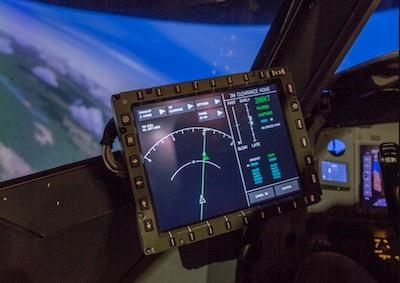Fri, Oct 05, 2018
Flight Deck Interval Management Will Provide Air Traffic Controllers More Precise Information As They Work To Space Aircraft Coming In On Approach
The FAA is optimistic about a NASA-developed technology that promises to increase capacity and reduce delays, fuel burn and emissions.

The FAA, NASA and others from the aviation industry today celebrated the transfer of a technology developed by NASA that will be used by the FAA and airlines.
The new technology, called Flight Deck Interval Management (FIM), integrates with another technology called Terminal Spacing and Sequencing (TSAS) to improve the use of performance-based procedures – to make it more efficient to land in congested terminal airspace.
FIM will provide air traffic controllers more precise information as they work to space aircraft coming in on approach. Controllers receive visual aids on their screens that help them execute clearances and conform to sequencing schedules to help aircraft arrive on time. The controller informs the pilot of the aircraft’s trajectory and the pilot enters the information into the FIM system.
The information is processed for the pilot through a satellite based navigation tool called Automatic Dependent Surveillance-Broadcast (ADS-B). With this information, the pilot assesses what speed to fly to enable them to do a performance based procedure into the airport.
The combined FIM and TSAS tools will provide numerous benefits.
Using performance-based operations, aircraft will spend less time in the air burning fuel and emissions. When aircraft burn less fuel, it saves money for the airlines. Passengers benefit because there’s a better chance their flights will arrive on time.
The FAA, NASA and industry are working together under a project called Air Traffic Management Technology Demonstration 1 or ATD-1 to bring new technologies to market that are designed to improve arrival times. FIM is one of the technologies that stems from that partnership. Boeing, Honeywell and United Airlines participated in the FIM development and flight test which involved two aircraft from Honeywell’s flight test fleet as well as a United 737.
(Source: FAA news release)
More News
Pilot Also Reported That Due To A Fuel Leak, The Auxiliary Fuel Tanks Were Not Used On June 4, 2025, at 13:41 eastern daylight time, a Piper PA-23, N2109P, was substantially damage>[...]
Have A Story That NEEDS To Be Featured On Aero-News? Here’s How To Submit A Story To Our Team Some of the greatest new stories ANN has ever covered have been submitted by our>[...]
From 2023 (YouTube Edition): Reflections on War’s Collective Lessons and Cyclical Nature The exigencies of war ought be colorblind. Inane social-constructs the likes of racis>[...]
Aero Linx: Colorado Pilots Association (CPA) Colorado Pilots Association was incorporated as a Colorado Nonprofit Corporation in 1972. It is a statewide organization with over 700 >[...]
High Speed Taxiway A long radius taxiway designed and provided with lighting or marking to define the path of aircraft, traveling at high speed (up to 60 knots), from the runway ce>[...]
 NTSB Prelim: Piper PA-23
NTSB Prelim: Piper PA-23 ANN FAQ: Submit a News Story!
ANN FAQ: Submit a News Story! Classic Aero-TV: One Mans Vietnam
Classic Aero-TV: One Mans Vietnam ANN's Daily Aero-Linx (07.03.25)
ANN's Daily Aero-Linx (07.03.25) ANN's Daily Aero-Term (07.03.25): High Speed Taxiway
ANN's Daily Aero-Term (07.03.25): High Speed Taxiway



